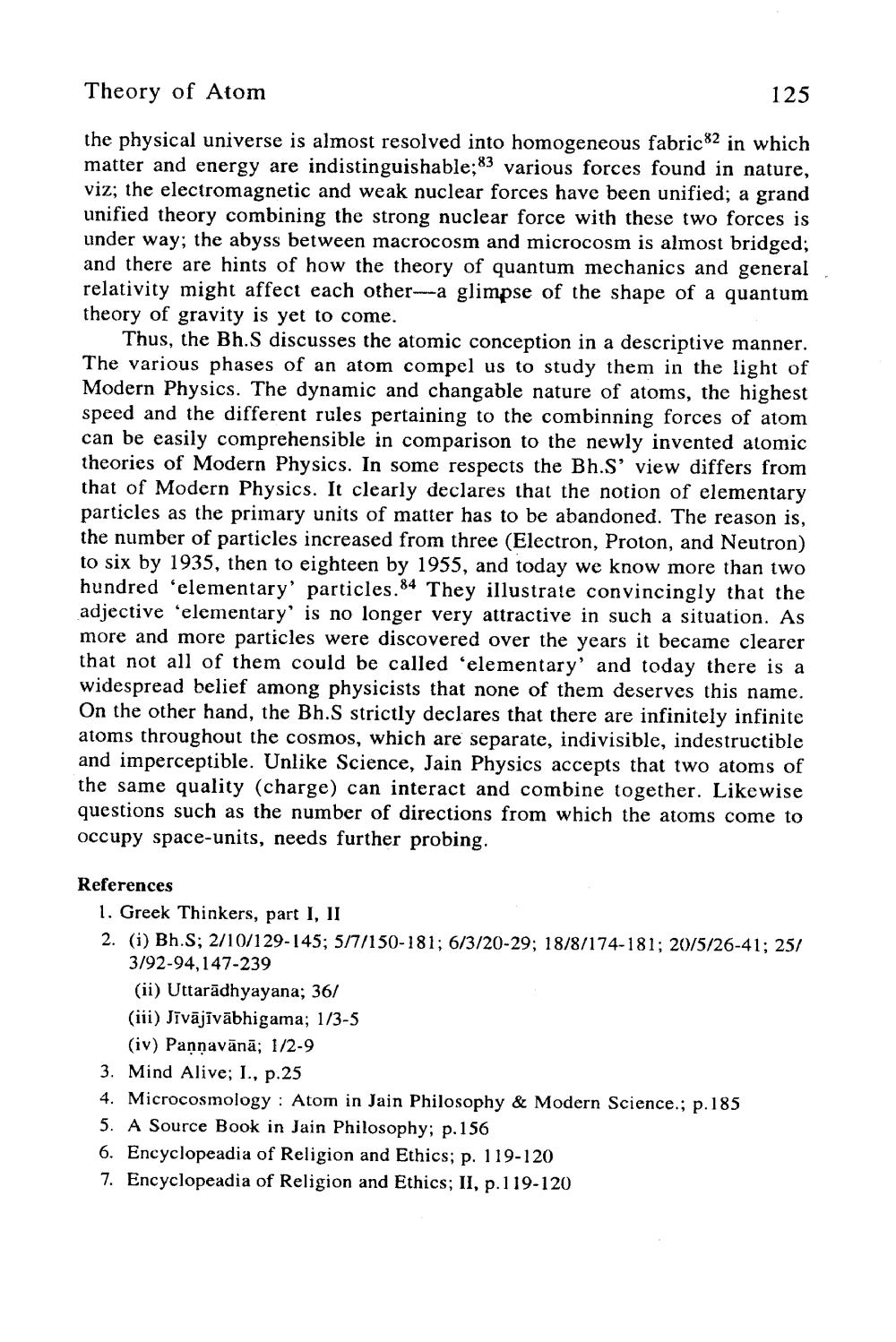________________
Theory of Atom
125
the physical universe is almost resolved into homogeneous fabric82 in which matter and energy are indistinguishable:83 various forces found in nature, viz; the electromagnetic and weak nuclear forces have been unified; a grand unified theory combining the strong nuclear force with these two forces is under way; the abyss between macrocosm and microcosm is almost bridged; and there are hints of how the theory of quantum mechanics and general relativity might affect each other-a glimpse of the shape of a quantum theory of gravity is yet to come.
Thus, the Bh.S discusses the atomic conception in a descriptive manner. The various phases of an atom compel us to study them in the light of Modern Physics. The dynamic and changable nature of atoms, the highest speed and the different rules pertaining to the combinning forces of atom can be easily comprehensible in comparison to the newly invented atomic theories of Modern Physics. In some respects the Bh.S' view differs from that of Modern Physics. It clearly declares that the notion of elementary particles as the primary units of matter has to be abandoned. The reason is, the number of particles increased from three (Electron, Proton, and Neutron) to six by 1935, then to eighteen by 1955, and today we know more than two hundred 'elementary' particles.84 They illustrate convincingly that the adjective elementary' is no longer very attractive in such a situation. As more and more particles were discovered over the years it became clearer that not all of them could be called 'elementary' and today there is a widespread belief among physicists that none of them deserves this name. On the other hand, the Bh.S strictly declares that there are infinitely infinite atoms throughout the cosmos, which are separate, indivisible, indestructible and imperceptible. Unlike Science, Jain Physics accepts that two atoms of the same quality (charge) can interact and combine together. Likewise questions such as the number of directions from which the atoms come to occupy space-units, needs further probing.
References
1. Greek Thinkers, part I, II
2. (i) Bh.S; 2/10/129-145; 5/7/150-181; 6/3/20-29; 18/8/174-181; 20/5/26-41; 25/ 3/92-94,147-239
(ii) Uttaradhyayana; 36/
(iii) Jīvājīvābhigama; 1/3-5
(iv) Panṇavānā; 1/2-9
3. Mind Alive; I., p.25
4. Microcosmology: Atom in Jain Philosophy & Modern Science.; p. 185
5. A Source Book in Jain Philosophy; p.156
6. Encyclopedia of Religion and Ethics; p. 119-120
7. Encyclopedia of Religion and Ethics; II, p.119-120




